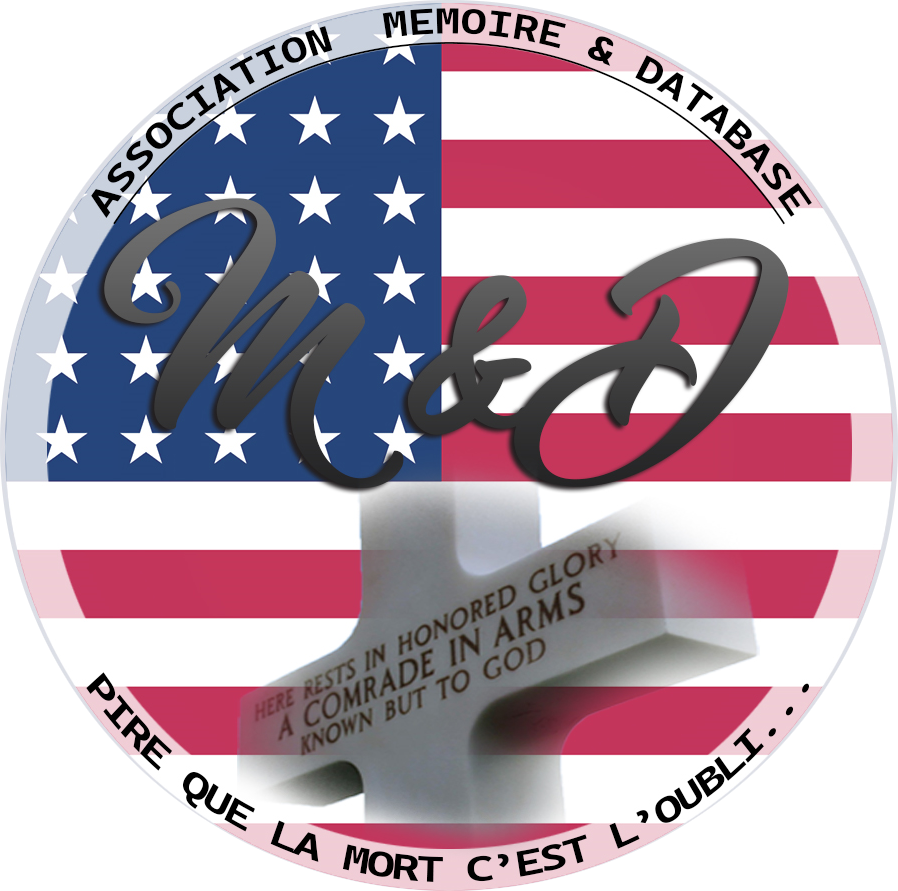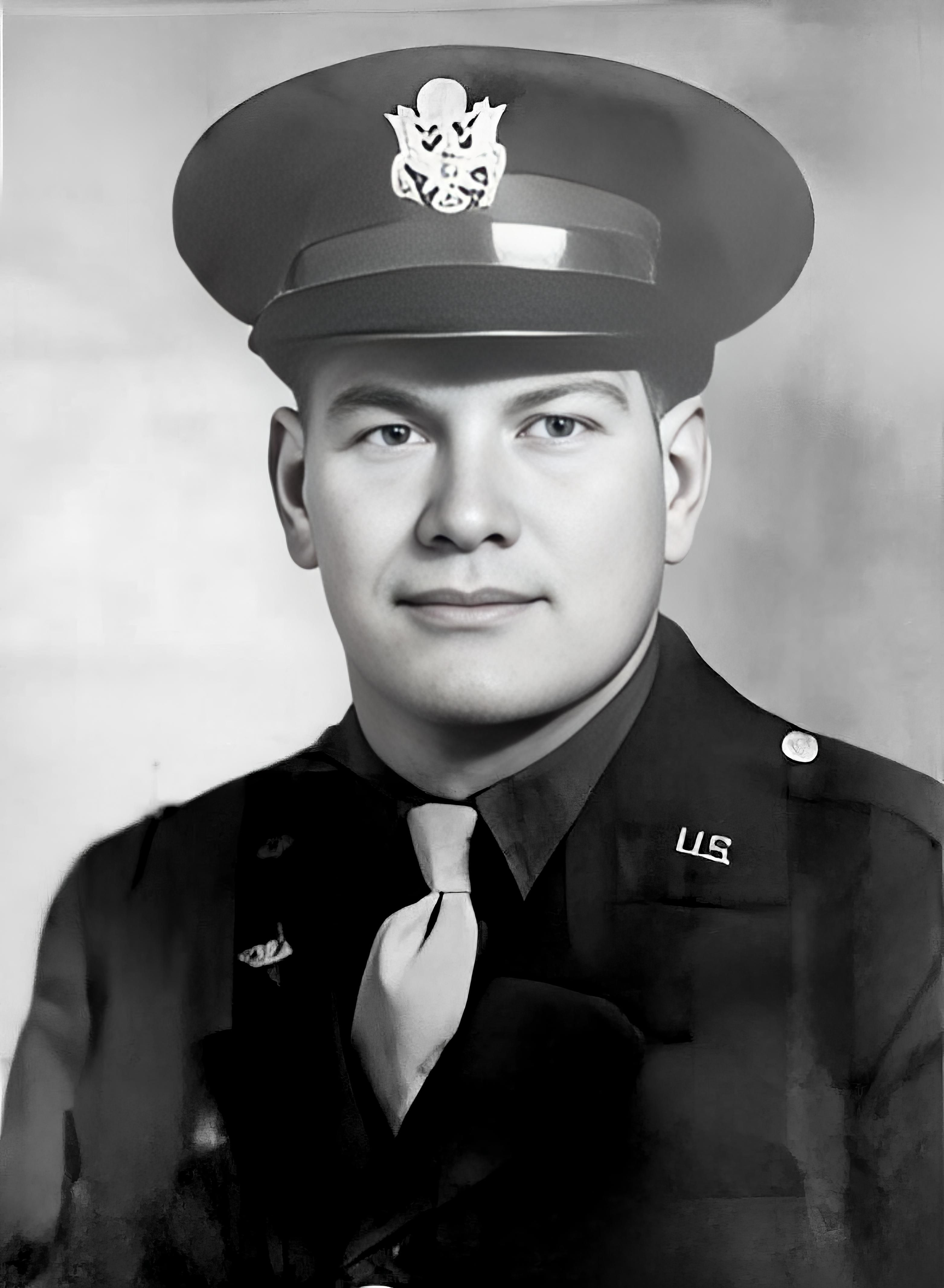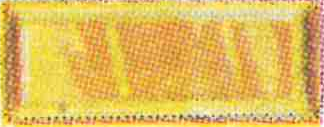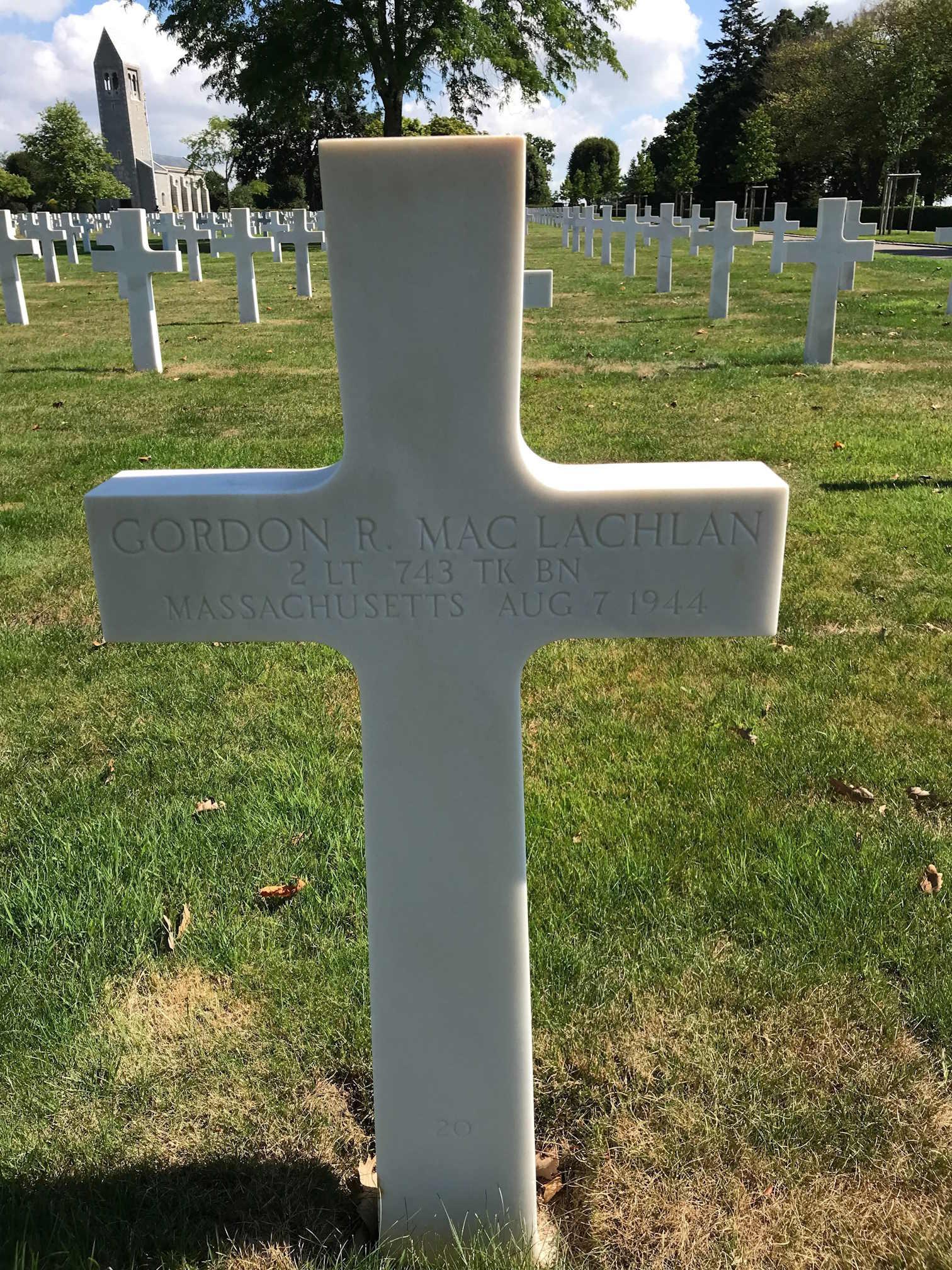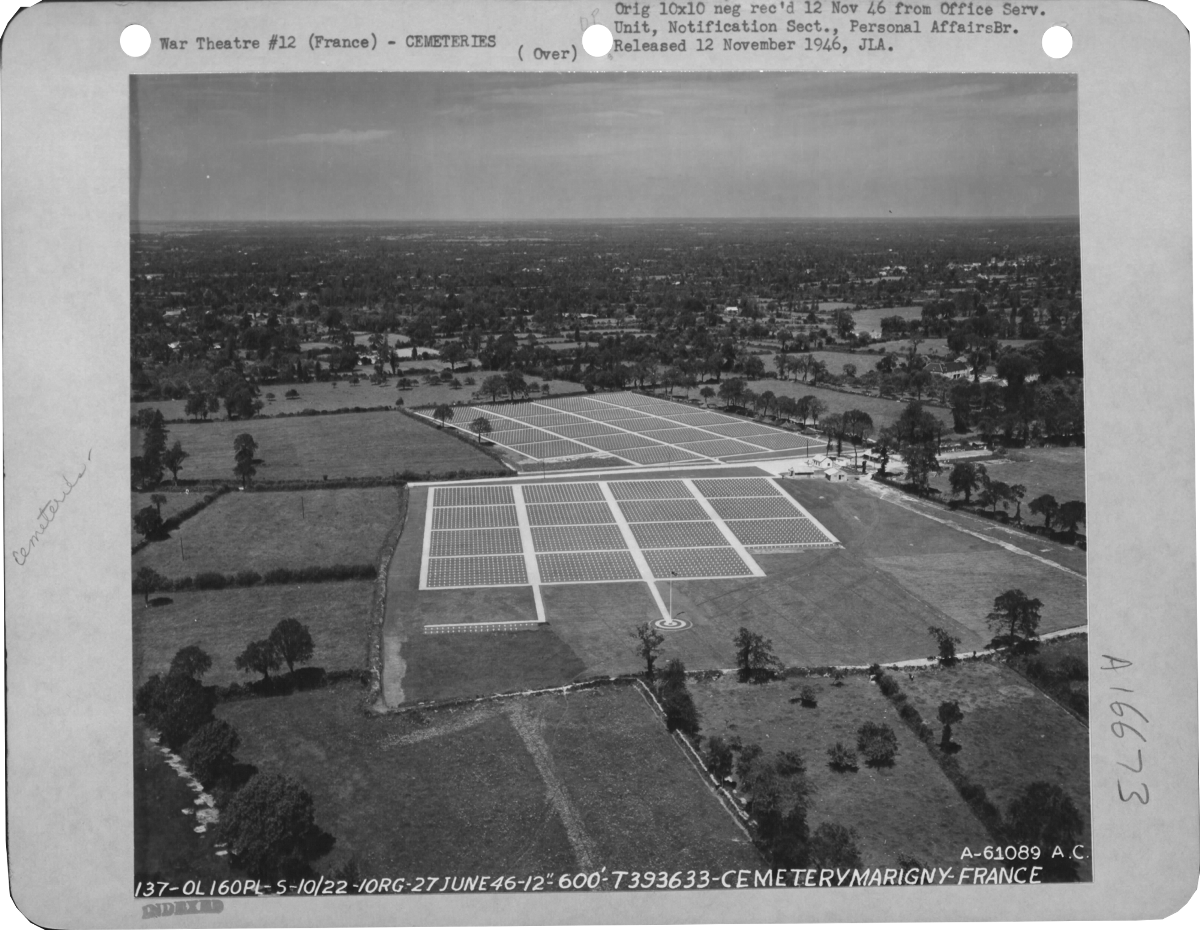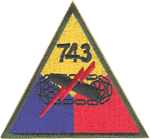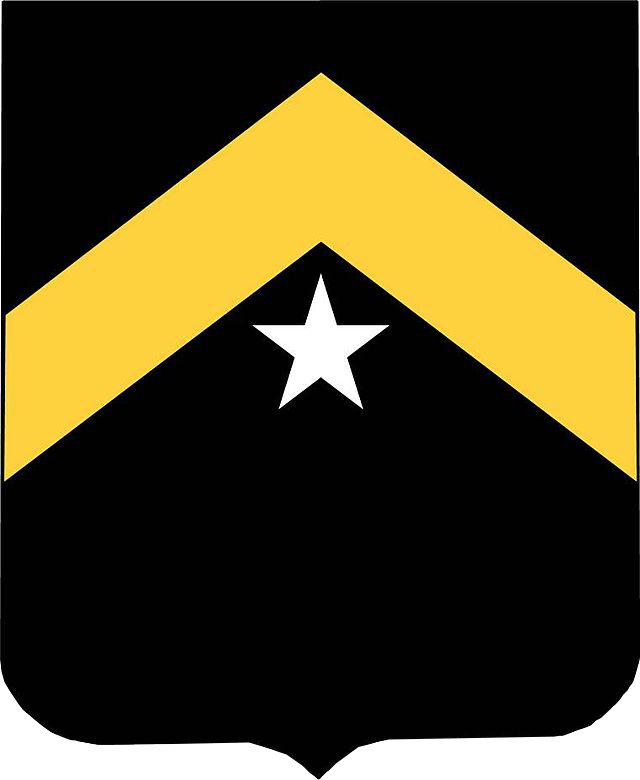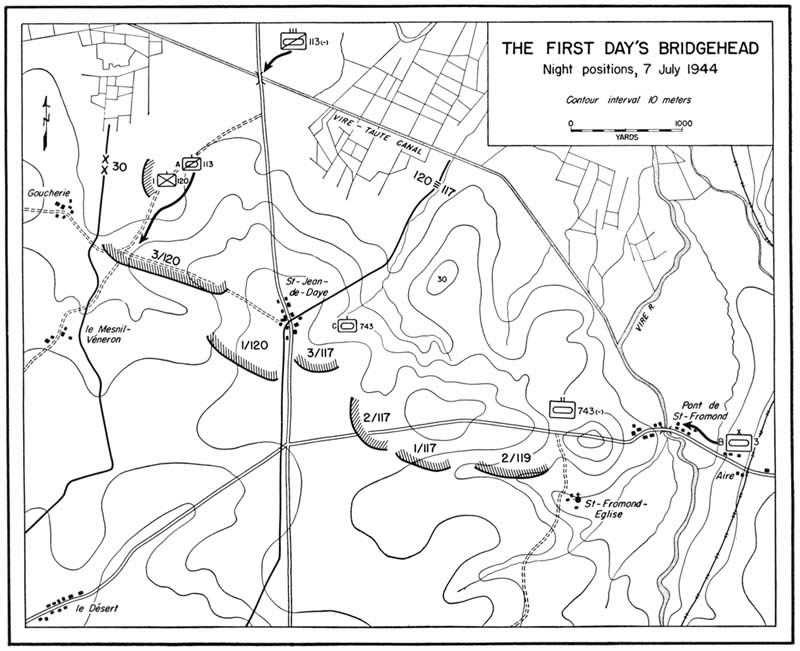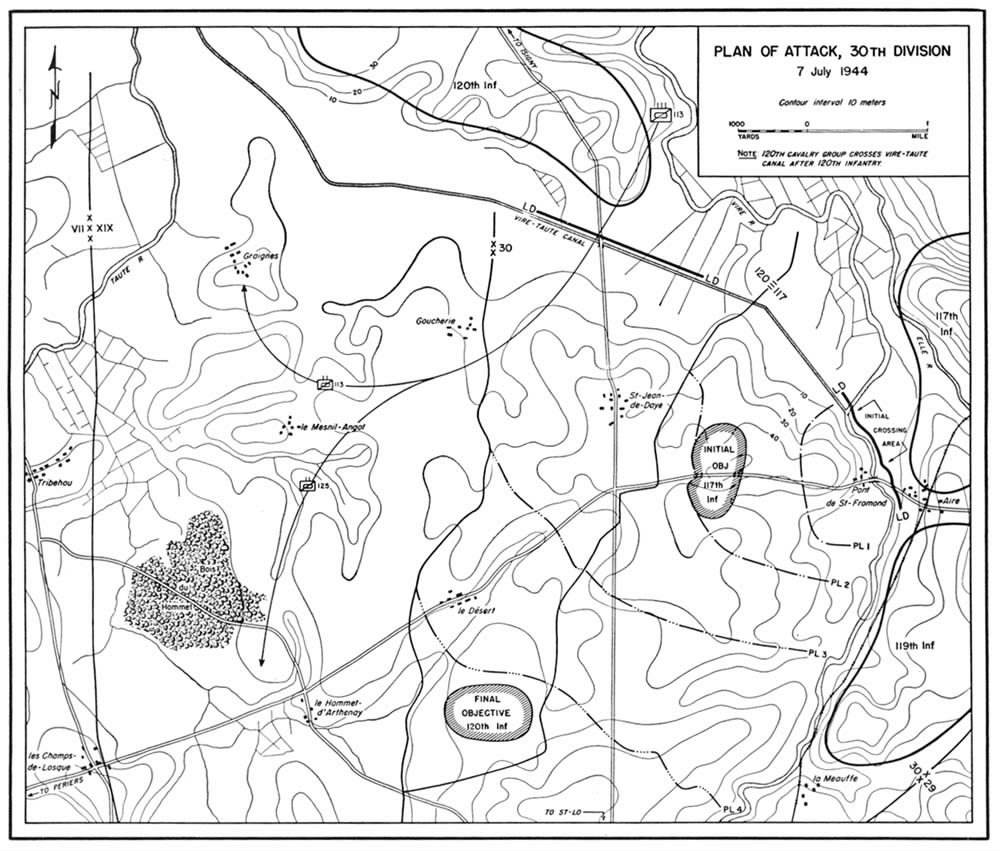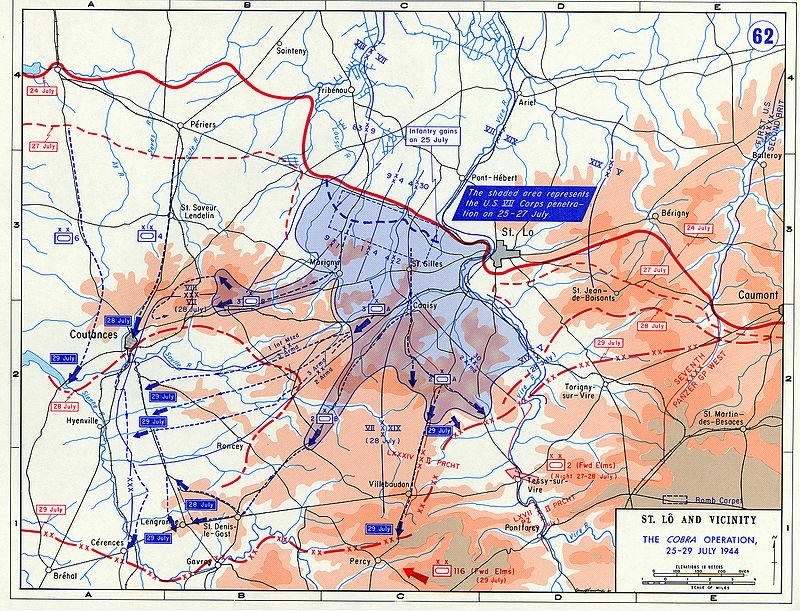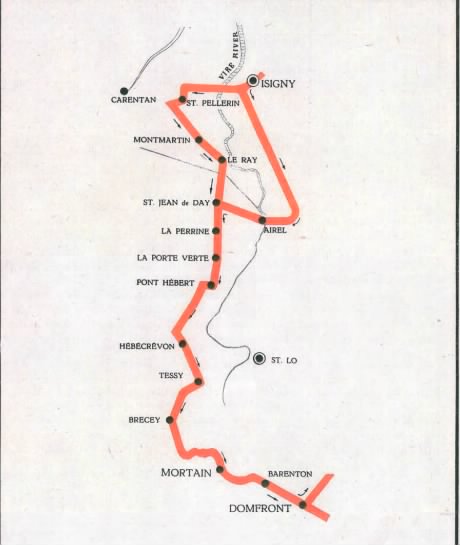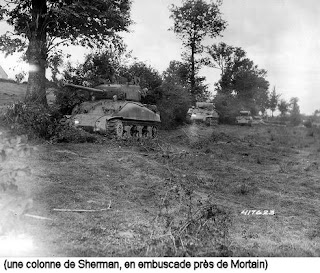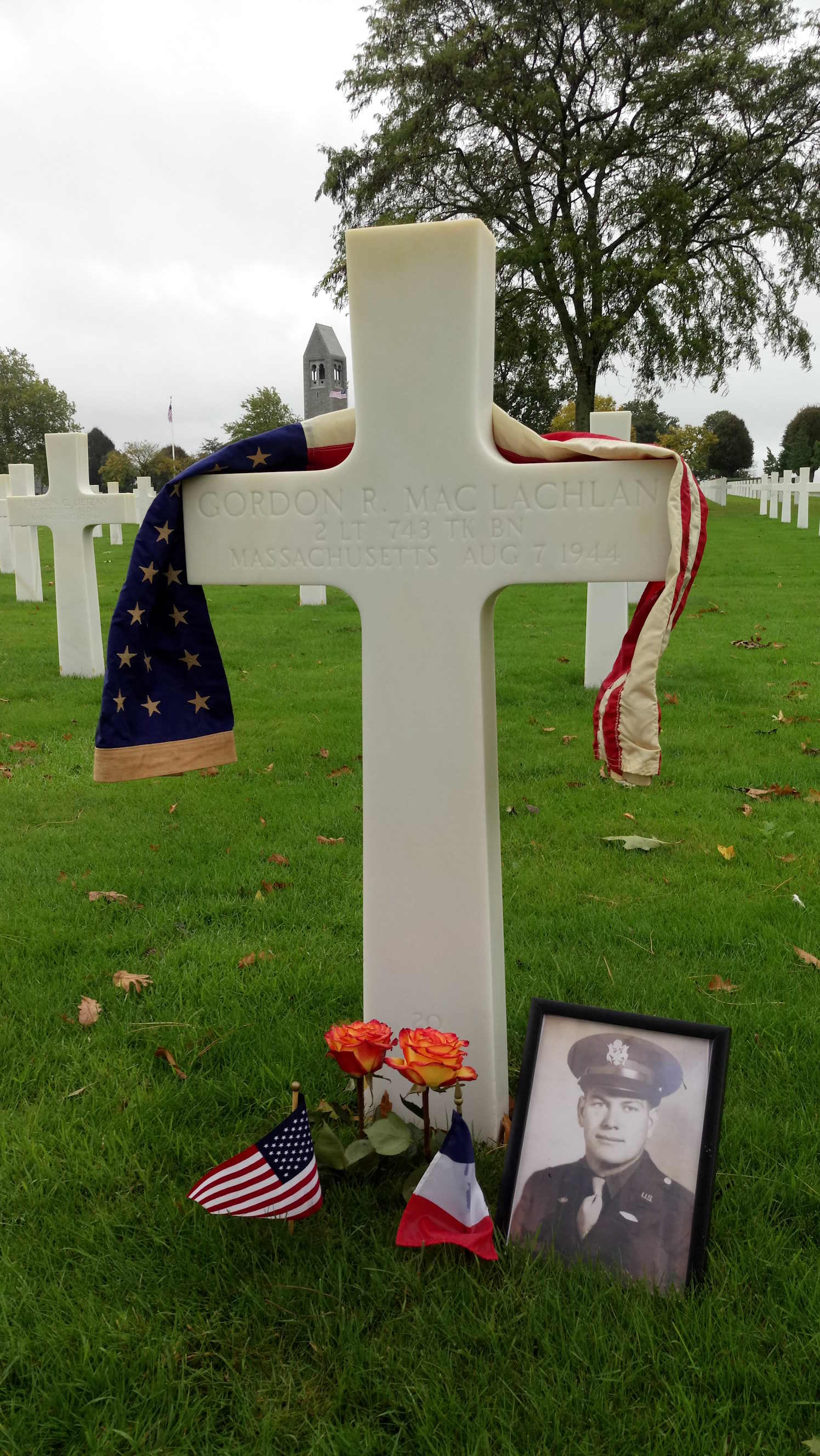|
Gordon Rae Mac LACHLAN
| |||||||
|---|---|---|---|---|---|---|---|
|
Source : Ellen Myers Marchese | |||||||
| NUMBER OF SERVICE | O 1018224 (31226794) | ||||||
| AGE | 25 yo | ||||||
| DATE OF BIRTH |
29 August 1918 Newton, Middlesex County, MASSACHUSETTS | ||||||
| ENLISTMENT STATE | MASSACHUSETTS | ||||||
| FAMILY |
Spouse : Barbara Delefield Greene Daughter : Diane Parents : Andrew MacLACHLAN & Mary LOWDEN (Origine Britannique) | ||||||
| RANK |
| ||||||
| FONCTION | Tankiste | ||||||
| JOB BEFORE ENLISTEMENT | Operateur to l’American Woolen Company Shawnee Mills à Andover |  | |||||
| DATE of ENLISTEMENT | 26 October 1942 | ||||||
| COMPANY | Company A | ||||||
| BATTALION | 743rd Tank Battalion | ||||||
| ARMY | Army | ||||||
| DATE OF DEATH | 7 August 1944 |
Source : Royzee | |||||
| STATUS | KIA | ||||||
| PLACE OF DEATH | Sector of Mortain | ||||||
| CEMETERY TEMPORARY |
CEMTERY TEMPORARY of Marigny N°3555
| ||||||
| CEMETERY | BRITTANY AMERICAN CEMETERY of St James (Montjoie St Martin) | ||||||
| GRAVE |
| ||||||
| DECORATION |
| ||||||
| |||||||
| STORY | |||||||
By : kiki_1987211(Fold3)Early lifeGordon Rae MacLachlan was born on August 29, 1918 in Newton, Middlesex County, Massachusetts. He was the son of Andrew and Mary MacLachlan, two British immigrants. His father, Andrew, was born in March 1870 in Carlisle, England, and worked as a spinner. His mother, Mary G (Née Lowden), was born in August 1879 in Glasgow, Scotland. | |||||||
From Civilian to US Army OfficerGordon was drafted into the US Army on October 26, 1942 as a Private. He was first sent to the induction center at Fort Devens, Massachusetts. His first serial number was 31226794. | 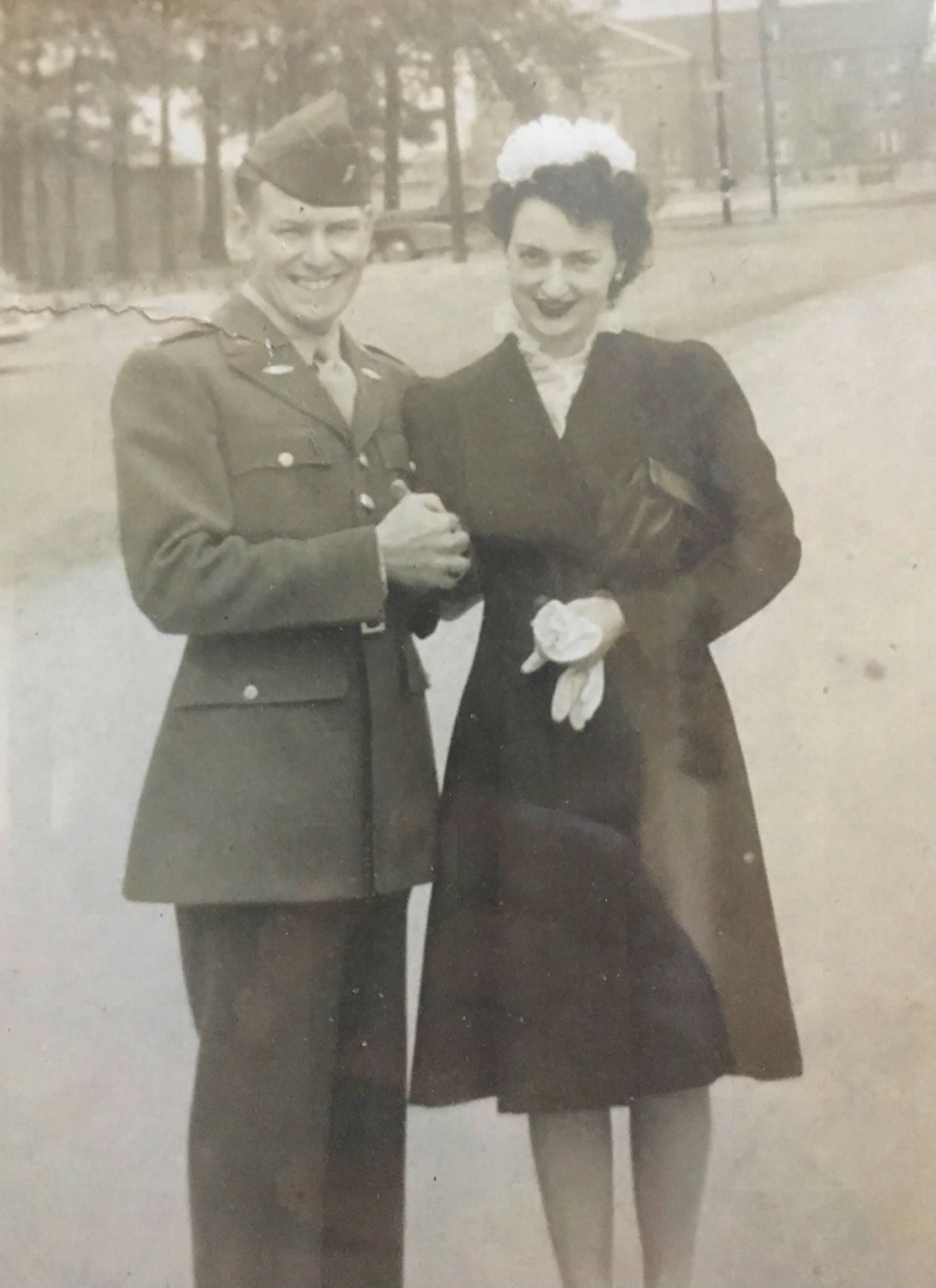
Picture with Barbara - Gordon was photographed with his wife Barbara just before shipping out. Source : kiki_1987211(Fold3) | ||||||
We keep the faithGordon was assigned to A Company, 743rd Tank Battalion on July 3, 1944 from 449th Replacement Depot and joined them the next day. He joined A Company as Maintenance and Repair Officer, commanding maintenance troops that went forward and retrieved shot up tanks under fire. | |||||||
|
Source : kiki_1987211(Fold3) |
| ||||||
Hedgerow warfare to Saint LôWhen Gordon joined A Company on July 4, 1944, his company was stationed ¼ mile south west of La Hatainerie (midway between Isigny sur Mer and Lison), Normandy, France. In Normandy, the 743rd Tank Battalion was in support of the 30th Infantry Division and participated in the drives to Saint Lô, and to Avranches after the Saint Lô breakout on July 25, 1944, and pushed back the enemy counterattack in Mortain (launched during the night of August 6/7, 1944). On July 4, 1944, the 743rdTank battalion was ordered to support the 120thInfantry Division in the attack on La Vire river, and to be ready to jump off the next day. However, the attack was postponed for 48 hours. | |||||||
|
Source : kiki_1987211(Fold3) |
| ||||||
Operation CobraOperation Cobra was an offensive launched by the American forces to break through the German defensive positions in Normandy, push south to Vire and west to Avranches, opening a corridor to Brittany. The 30th Infantry Division occupied positions northwest of Saint Lô. The 743rd Tank Battalion reach the fields north of Hebecrevon. On July 24, 1944, the attack began. The morale of the troops soared as they saw Allied planes flying overhead and heard the sounds of the bombs exploding on the German positions. It looked good and it sounded good! The units withdrew behind the bomb safety line, but the bombs began to fall short and fell on the troops and tanks as they began to move forward. There was panic and confusion on the ground and the attack was finally postponed for 24 hours. The 743rdTank Battalion was miraculously intact with only one manwounded. | |||||||
|
|
Source : kiki_1987211(Fold3)
Route in Normandy Source : kiki_1987211(Fold3) | ||||||
|
A sherman’s column, ambushed near Mortain Source : Diberville.blogspot.com |
“Operation Lüttich”, MortainConcerned by the extremely rapid advance of the Americans in the sector of Mortain, the Germans launched Operation Lüttich during the night of August 6/7, 1944, a powerful attack toward the sea to split the US forces on the Normandy and Brittany peninsula. The 30thInfantry Division was hit hard in the section of the 117thInfantry Regiment near Saint Barthelemy. Saint Barthelemy was a small village with homes and farms, on the main road leading to the west of Normandy. Hill 314 dominated the village to its north. Enemy tanks and infantrymen were repelled, but the battle of Mortain lasted for 6 days. | ||||||
| Mary, Gold Star Mother
According to the morning reports of A Company, Gordon was killed in action on August 7, 1944 at about 8:00 PM. At the time of his death, he was serving as a Tank Platoon Leader and as a Tank Commander. The exact circumstances of his death were not detailed. Sergeant Hembree, A Company, was wounded in action by small arms fire. |
Picture of the grave of Gordon at the Brittany American Cemetery taken in October 2023 Source : kiki_1987211(Fold3) | ||||||
A last letter
|
“I am sitting under an apple tree in an orchard, the sun is shining and I have a fifth of scotch and one of gin beside me. We just go our liquor ration. It costs about [$1.25] for gin and [$1.50] for scotch. It seems impossible that a while ago we were fighting for our lives. I’ve talked to officers from the infantry and other units who saw action in Italy and Africa and they say this is by far the toughest fighting they have seen yet. | ||||||
| SOURCE INFORMATION & SOURCE PHOTO | Findagrave.com - Abmc.gov - Fold3 |
|---|---|
| PROGRAMMER | Victor, Jean-Philippe, Eric, Henri, Garrett, Clive, Frédéric & Renaud |


